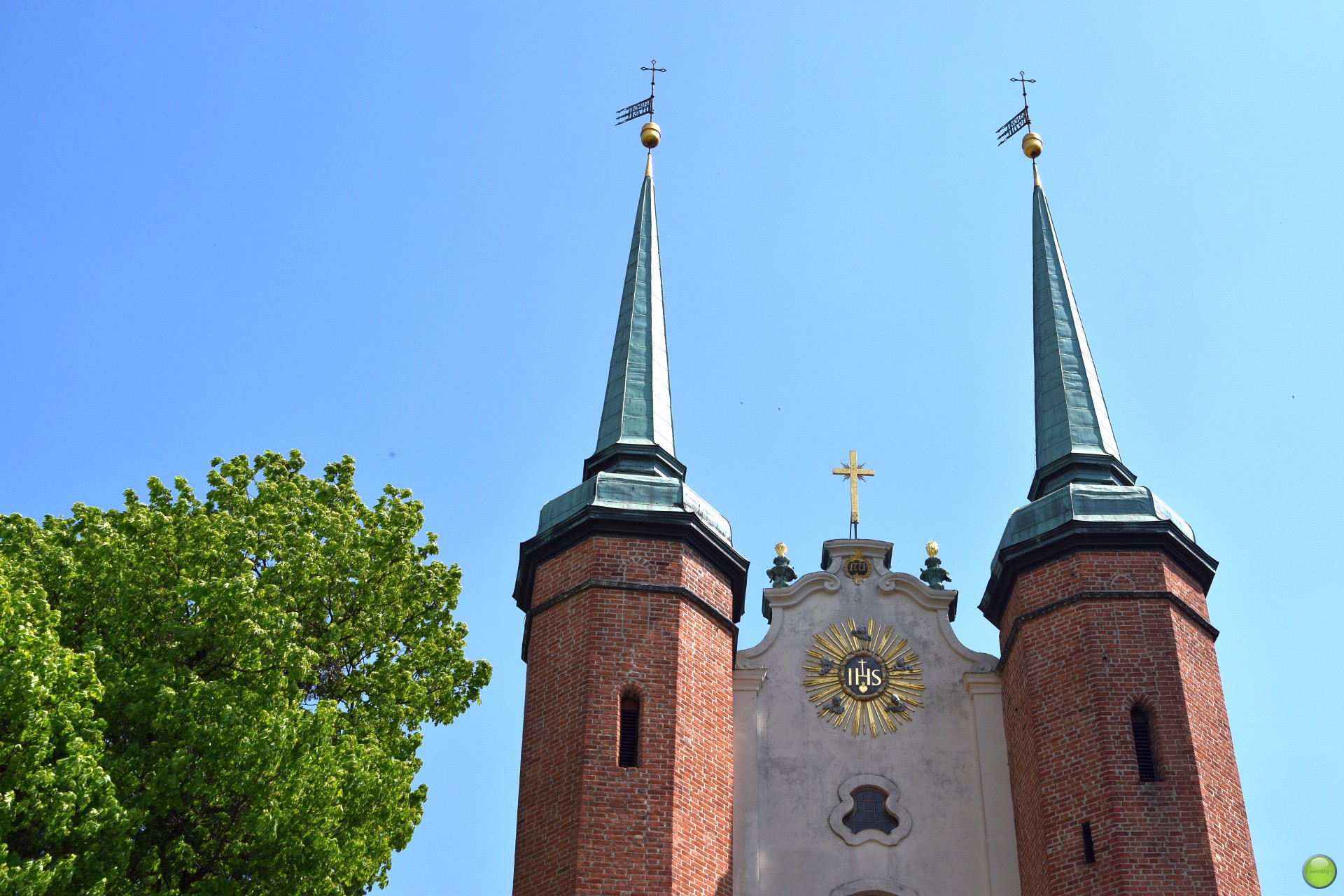Oliwa Cathedral, officially known as the Archcathedral Basilica of the Holy Trinity, is a historic Roman Catholic church located in the Oliwa district of Gdańsk, Poland. Built in the 13th century, it is one of the largest Cistercian churches in Europe and a prime example of Gothic architecture. The cathedral is renowned for its impressive 18th-century organ, which features over 7,800 pipes and elaborate Rococo ornamentation. The church’s interior also boasts beautiful Baroque and Rococo elements, including ornate altars and sculptures. Oliwa Cathedral has played a significant role in Polish history, serving as a coronation site for Polish kings and hosting important religious and cultural events. Today, it remains an important religious center and popular tourist attraction, drawing visitors from around the world to admire its architectural beauty and rich heritage.
Step inside Oliwa Cathedral, and you’ll find yourself transported to a world of breathtaking Baroque splendor. This architectural gem, nestled in the Oliwa district of Gdańsk, Poland, boasts an interior that’s nothing short of awe-inspiring. As you cross the threshold, your eyes are immediately drawn upward to the soaring vaulted ceilings, adorned with intricate frescoes that seem to dance in the soft light filtering through the stained-glass windows.
The cathedral’s Baroque makeover, which took place in the 17th and 18th centuries, transformed the once-austere Gothic structure into a visual feast. Every surface appears to be alive with ornate details, from the gilded altars to the elaborately carved wooden pews. It’s as if the artists and craftsmen of the time were engaged in a friendly competition to outdo one another, each leaving their mark on this sacred space.
One of the most striking features of the cathedral’s interior is the main altar, a towering masterpiece that commands attention from the moment you enter. Created by the renowned sculptor Johann Heinrich Meissner, this Baroque tour de force is a symphony of gilt and polychrome, with twisting columns and dramatic sculptures that seem to defy gravity. The altar’s centerpiece, a painting of the Assumption of the Virgin Mary, is framed by an explosion of angelic figures and ornate scrollwork that draws the eye ever upward.
As you move through the cathedral, you’ll encounter a series of side chapels, each a miniature work of art in its own right. These intimate spaces offer a more personal connection to the divine, with their own altars, sculptures, and paintings. The Chapel of St. John the Baptist, for instance, features a stunning altarpiece depicting the saint’s martyrdom, its vivid colors and dynamic composition a testament to the skill of its creator.
But perhaps the most famous feature of Oliwa Cathedral’s interior is its magnificent organ. This colossal instrument, built in the 18th century by Johann Wilhelm Wulff, is not only a marvel of musical engineering but also a stunning visual spectacle. The organ’s facade is a riot of Baroque exuberance, with gilded sculptures of angels and cherubs seeming to float among the pipes. When the organ is played, the entire cathedral comes alive with sound, the music reverberating off the stone walls and filling every corner of the space.
As you wander through the cathedral, you’ll notice the interplay of light and shadow, a key element of Baroque design. The architects and artists of the time were masters at manipulating light to create dramatic effects, and Oliwa Cathedral is no exception. Sunlight streams through the clerestory windows, illuminating the frescoes and gilded surfaces, while shadowy corners invite contemplation and prayer.
The cathedral’s floor is another often-overlooked masterpiece, with its intricate patterns of marble and stone creating a visual tapestry underfoot. As you walk, you can’t help but marvel at the skill and patience required to create such detailed work, a testament to the dedication of the artisans who contributed to this sacred space.
As your visit to Oliwa Cathedral comes to an end, you’ll likely find yourself lingering, reluctant to leave this extraordinary place. The Baroque interior, with its harmonious blend of architecture, sculpture, painting, and music, creates an immersive experience that speaks to both the senses and the soul. It’s a reminder of the power of art to inspire, to elevate, and to connect us to something greater than ourselves. Whether you’re a lover of architecture, a student of history, or simply someone in search of beauty, Oliwa Cathedral’s Baroque interior is sure to leave an indelible impression.
Oliwa Cathedral stands as a testament to centuries of architectural evolution and religious significance in Gdańsk, Poland. Its impressive Rococo organ, intricate interior design, and towering twin spires make it a prominent landmark and cultural treasure. The cathedral’s history, spanning over 800 years, reflects the region’s complex past and serves as a symbol of resilience and faith. Today, it continues to function as an important religious center while also attracting visitors from around the world who come to admire its beauty and historical importance.

